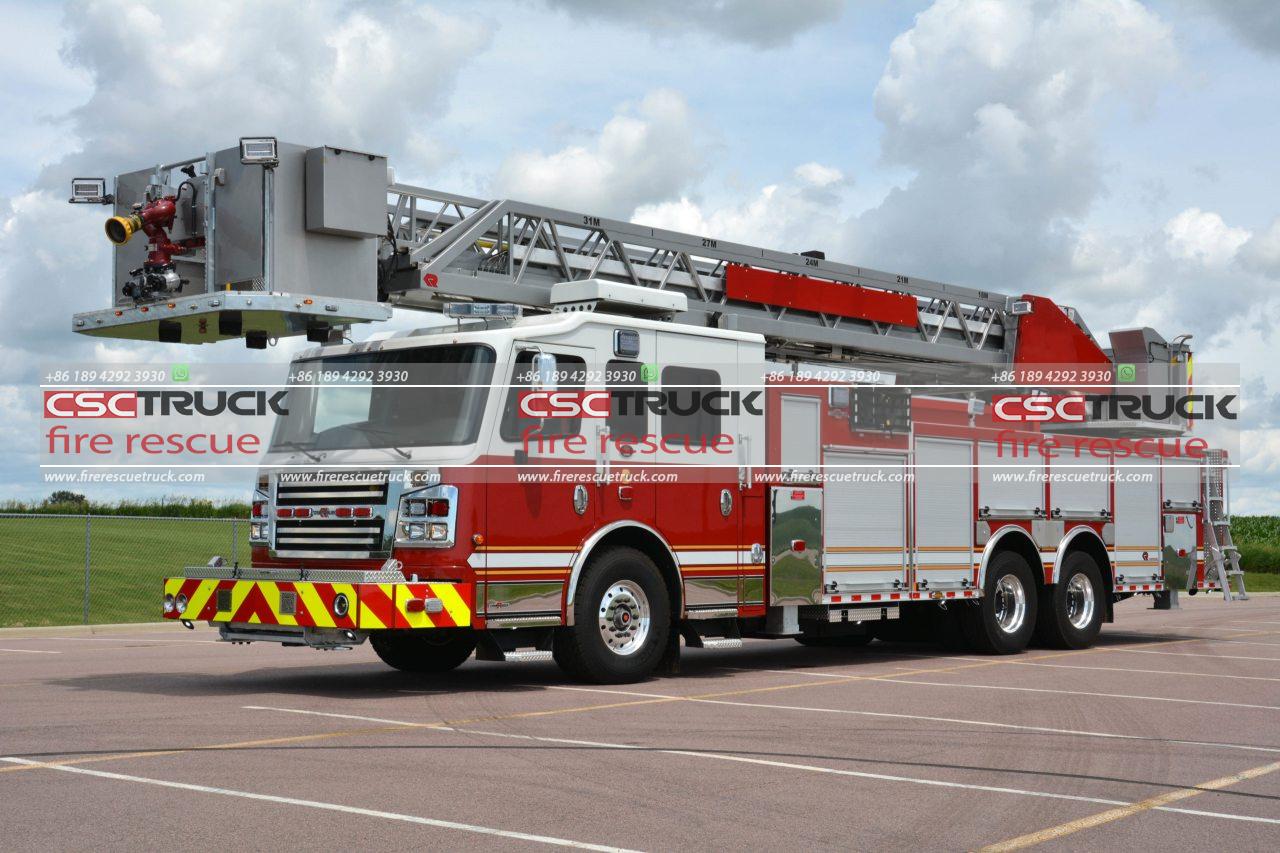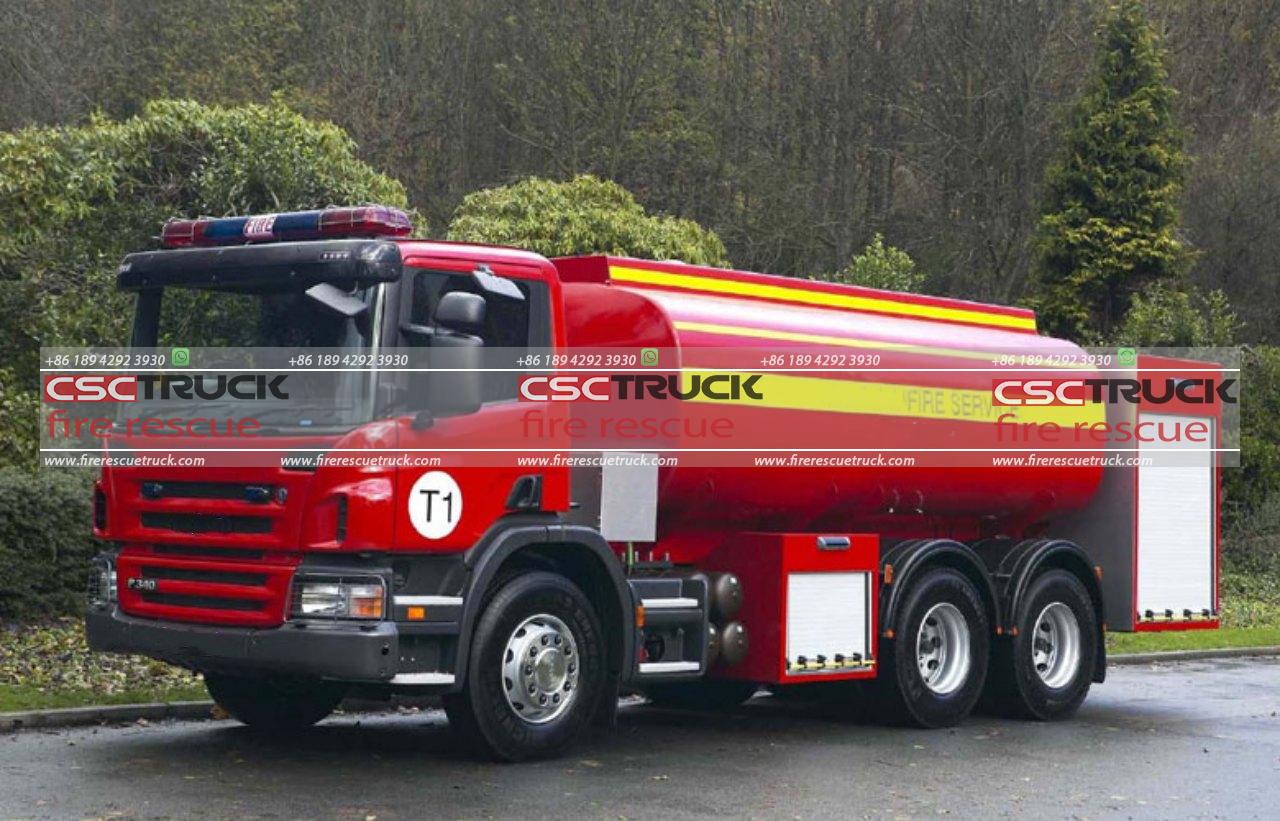Is There Water in a Fire Truck?
When people picture a fire truck racing to an emergency, they often imagine a vehicle full of water, ready to combat flames the moment it arrives. But is there water in a fire truck, and if so, how much? The answer varies based on the type of fire truck and its intended purpose. Let’s dive into the fascinating details of fire trucks, their design, and how water is integrated (or not) depending on the vehicle’s specific functions.
Fire Trucks vs. Fire Engines: Understanding the Difference
Before examining the water question, clarify the difference between a “fire truck” and a “fire engine.” In everyday language, people tend to use these terms interchangeably, but in the fire service, they have distinct meanings:
1. Fire Engine (Pumper Truck): These are the classic vehicles designed primarily for fighting fires. Fire engines are typically equipped with water tanks, hoses, pumps, and firefighting equipment to apply water directly to a fire.
2. Fire Truck (Ladder Truck): Fire trucks are larger, designed for rescue operations, and are usually equipped with ladders, aerial devices, and additional tools. These trucks often assist firefighters with gaining access to buildings and high-rise rescues, rather than actively putting water on a fire.
For simplicity’s sake, in this article, we’ll refer to both fire engines and trucks as “fire trucks.” However, it’s the pumper-style fire engine that typically carries water, while the ladder-style truck often does not.
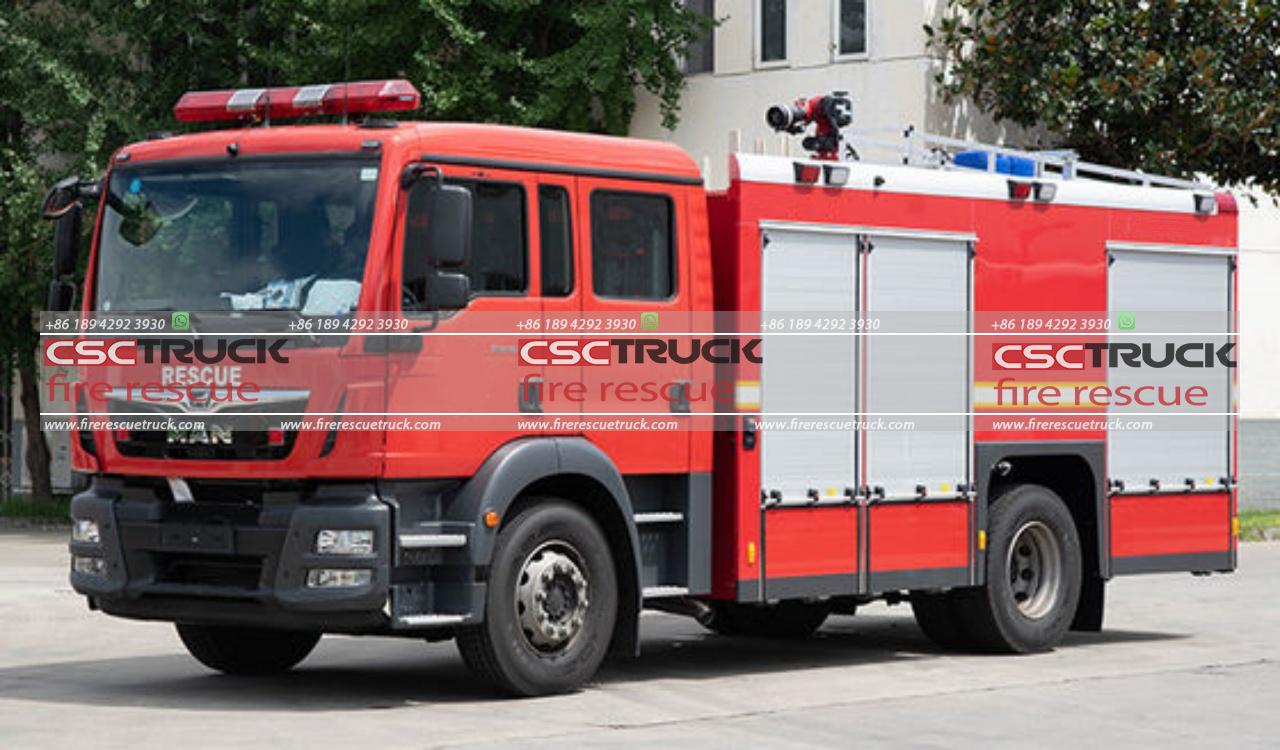
Water Tanks: Why Fire Engines Carry Water
Most fire engines come equipped with built-in water tanks, which allow firefighters to have immediate access to water when they arrive at a scene. This onboard water tank serves several key functions:
1. Immediate Access: The first few moments on the scene of a fire can be crucial. By having an onboard water supply, firefighters can begin fighting the fire as soon as they arrive, without needing to find a hydrant first. This can be especially helpful in rural or remote areas where hydrants may be sparse or nonexistent.
2. Portability: Fire trucks must sometimes fight fires in places that are hard to access or far from municipal water sources. Carrying water allows them to operate in a self-contained way and be effective in diverse environments.
3. Backup Supply: In urban settings with readily available hydrants, the onboard water is usually only used as a backup, keeping the fire in check until a secure water supply from the hydrant is established.
How Much Water Do Fire Engines Typically Carry?
The amount of water a fire engine carries can vary widely based on the truck’s size, design, and intended use. Here’s a general look at the water capacity for different types of fire engines:
1. Standard Municipal Fire Engines: In cities and urban settings, a typical fire engine might carry between 500 and 1,500 gallons of water. These engines are designed to provide just enough water to begin firefighting until a hydrant connection is established.
2. Rural Fire Engines: In areas without nearby fire hydrants, rural fire engines may carry larger water tanks. These trucks can hold as much as 1,500 to 3,000 gallons of water to allow for sustained firefighting in remote areas. Some rural departments also use “tenders” or “tankers,” which are trucks solely dedicated to hauling large amounts of water, often up to 5,000 gallons.
3. Wildland Fire Engines: For combating wildfires, specialized fire engines are designed to be more maneuverable, allowing them to navigate through forests and rough terrain. These trucks might carry anywhere from 300 to 1,000 gallons of water, as the focus is on flexibility rather than volume. In wildland firefighting, water is often used sparingly, complemented by other techniques like controlled burns and creating firebreaks.
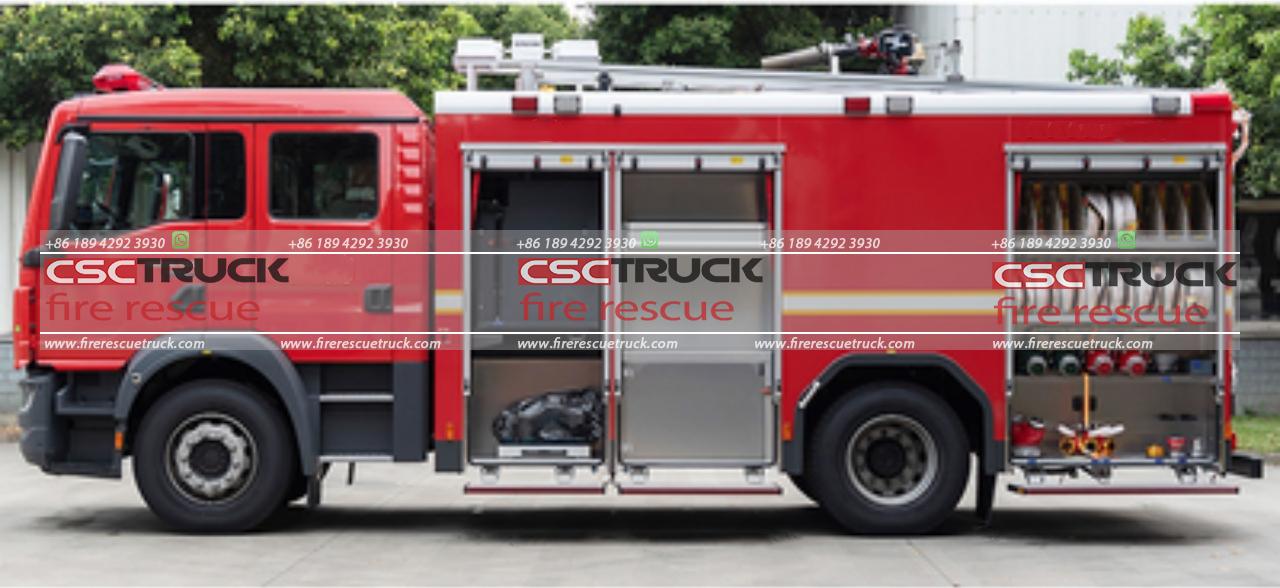
How Do Fire Engines Deliver Water to Fires?
Fire engines have advanced systems to pump water from their tanks at high pressure, allowing them to reach great heights and distances. The components involved include:
1. Water Pump: This is the heart of the fire engine’s water delivery system. Fire pumps are typically capable of pumping water at pressures of up to 1,500 gallons per minute (GPM) or more. Firefighters can adjust the pressure and flow rate based on the specific needs of the fire situation.
2. Hoses and Nozzles: Fire engines are equipped with various hoses and nozzles that allow firefighters to direct water exactly where it’s needed. These hoses can range from large-diameter lines designed to put out vast amounts of water quickly to smaller lines for more controlled, precise applications.
3. Preconnected Hoses: Known as “preconnects,” these hoses are stored on the fire engine and are connected to the water tank and pump, allowing firefighters to begin spraying water almost instantly when they arrive on the scene.
4. Foam Systems: Some fire engines are equipped with foam systems that mix water with firefighting foam. This foam creates a thicker, more effective blanket that can smother fires faster, particularly in situations involving flammable liquids.
Do Ladder Trucks Carry Water?
While fire engines usually carry water, ladder trucks typically do not. Ladder trucks are primarily focused on search and rescue operations and providing firefighters access to high places. They are equipped with long ladders and often a “bucket” or “platform” that can be raised to rescue people or give firefighters access to the upper stories of buildings.
However, some ladder trucks are equipped with water connections, allowing them to operate hoses from their aerial ladders. In these cases, the water is typically supplied from a hydrant or another fire engine on the scene, rather than from an onboard tank. The ladder truck may have a small water tank, but it’s not designed to be the primary source of water for firefighting.
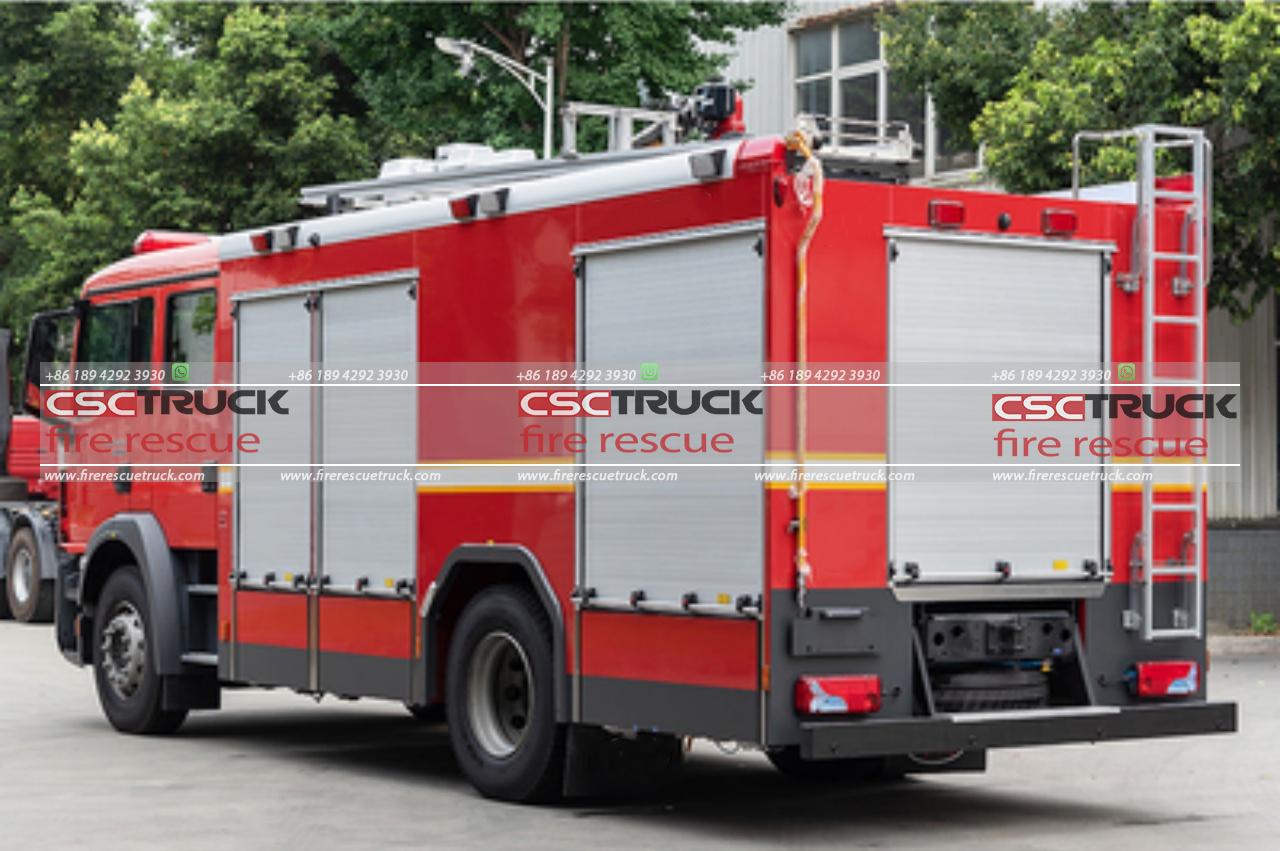
Are There Fire Trucks Without Any Water?
In addition to ladder trucks, there are specialized fire vehicles that carry no water at all. These may include:
1. Rescue Vehicles: Dedicated rescue trucks carry equipment for vehicle extrication, building rescues, and other specialized operations. They don’t carry water, as their role is to support firefighters in non-fire-related emergencies.
2. Command Vehicles: These are mobile command centers for coordinating large-scale emergency responses. Command vehicles are equipped with advanced communication systems, maps, and tools for incident management, but they do not carry water.
3. Hazmat Trucks: Hazardous materials (hazmat) trucks are equipped to handle chemical spills, gas leaks, and other dangerous substances. They may carry equipment for neutralizing or containing hazardous materials, but they don’t include water tanks.
How Do Fire Departments Ensure Adequate Water Supply?
When a fire engine’s onboard tank runs dry or the situation requires more water than is immediately available, fire departments use several strategies to ensure a continuous supply:
1. Hydrant Connections: In urban areas, fire engines quickly connect to fire hydrants, which provide a virtually unlimited water source.
2. Water Tenders: In rural areas, fire departments often deploy water tenders (also known as tankers) that bring additional water to the scene. These vehicles can make multiple trips between a water source and the fire.
3. Relay Pumping: For fires located far from a water source, multiple engines can be set up in a relay, with each one pumping water to the next over a long distance.
4. Drafting: In emergencies near bodies of water like ponds, lakes, or rivers, fire engines can use a technique called “drafting,” where they draw water directly from the natural source.
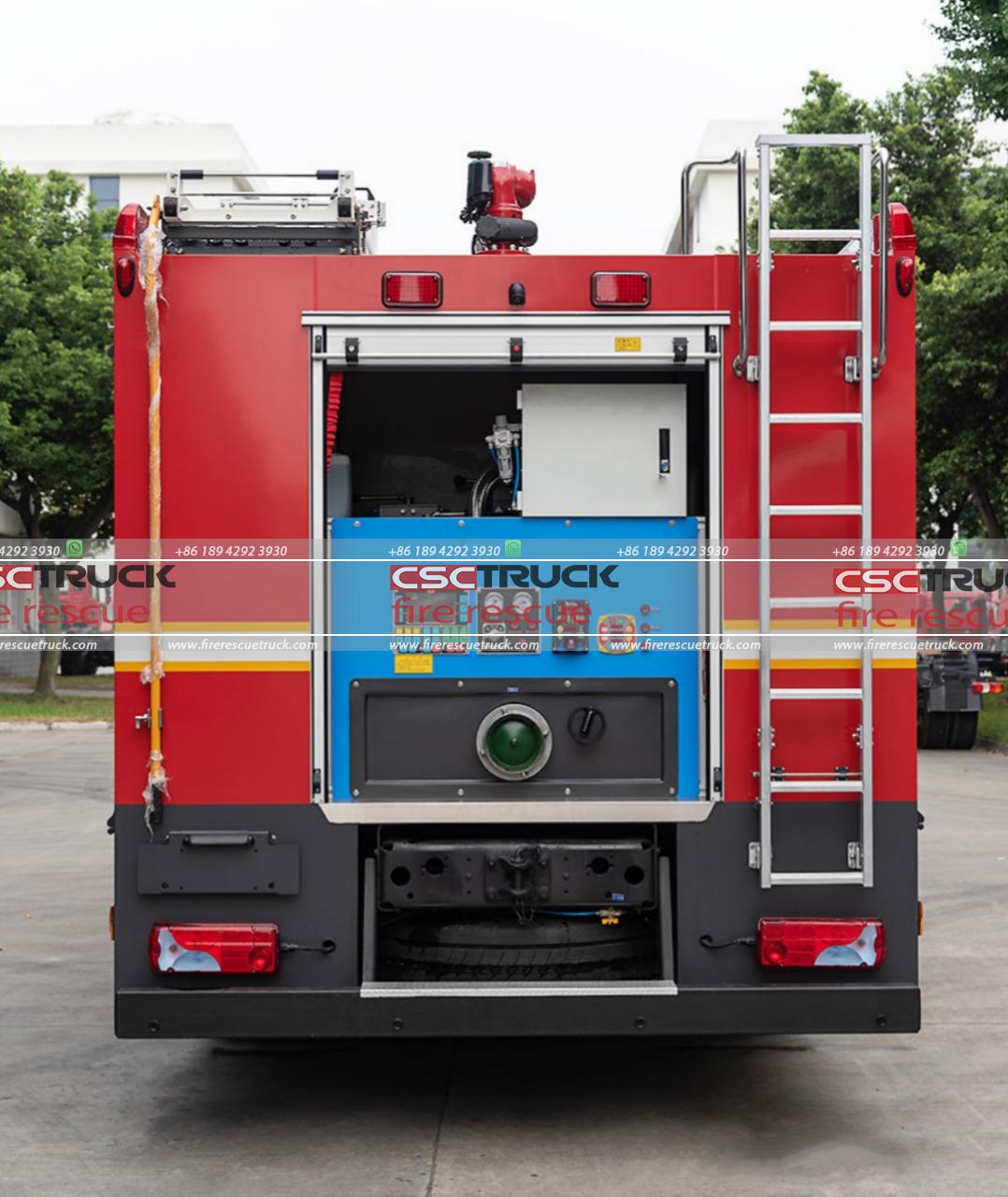
Conclusion: Yes, But Not Always
So, is there water in a fire truck? The answer is mostly yes if we’re referring to fire engines, which typically carry between 500 to 3,000 gallons of water, depending on their role and location. These engines are designed for active firefighting and are equipped to deliver water directly to the flames. However, ladder trucks, rescue vehicles, and command units generally do not carry water since their primary functions are search, rescue, and command support.
In short, fire trucks are designed for a range of purposes, and whether or not they carry water depends on the type of truck and its mission. Understanding this nuance helps clarify how fire departments effectively respond to emergencies and why having a fleet of specialized vehicles is crucial to their work.



